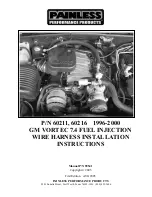
Supplemental Restraint System
The SRS includes the steering
wheel airbag assembly, sensors in
the dashboard, and a control unit
with sensors behind the center
console.
(US: Si 4WS, VTEC, Canada: SR
4WS, SR-V)
The system also has a dashboard-
mounted airbag assembly for the
passenger.
The sensors are decelerometers,
set to trigger in a severe frontal
impact that generates more force
than a 25 mile per hour crash into a
parked vehicle of similar size. For
the SRS to activate, at least two
sensors must trigger. This duplica-
tion is to prevent accidental activa-
tion.
When the control unit receives
trigger signals from at least two
sensors, it sends voltage to the
airbag. The control unit stores this
charge in capacitors to insure
reliability even if a severe impact
damages the car's battery or
electrical connections.
The electrical charge sent to the
airbag assembly ignites its propel-
lant, which burns instantaneously.
The gas produced by the burning
propellant inflates the airbag
instantly.
The airbag is vented so it stays
inflated for only an instant and
does not block the driver's vision.
Smoke from the burned propellant
comes out of the airbag and into
the car's interior. This is normal
and does not mean there is a fire.
The airbag collapses onto the
driver's lap.
The airbag unit can inflate only one
time. After use, your Honda dealer
must check the complete Supple-
mental Restraint System and re-
place the airbag assembly.
To ensure long-term reliability, the
SRS uses gold-plated electrical
connections throughout. Exposed
components are sealed with epoxy.
The control unit monitors the SRS
circuitry whenever the ignition is
ON (II). If the control unit senses
any faults, it turns on the SRS
indicator light on the instrument
panel. Take the car to your Honda
dealer to diagnose and repair the
system as soon as possible.
The SRS needs no regular mainte-
nance other than an inspection by
your Honda dealer ten years after
manufacture.
Technical Information
Main Menu
Table of Contents
▲
▼
















































